Approved: Junior Membership | Democratic Crowned Republic of Calaré
+13
Spy9600
Cyclone-1001
woodb3kmaster
Neil
Peter
Blakeway4
anarchy0029
Aranho
Thomas
MiguelLeal
Kevin
ForthWall
Jo
17 posters
Page 1 of 2
Page 1 of 2 • 1, 2 
Vote Now
 Approved: Junior Membership | Democratic Crowned Republic of Calaré
Approved: Junior Membership | Democratic Crowned Republic of Calaré
Application for Calaré to join the Alliance of Independent Nations
National Flag
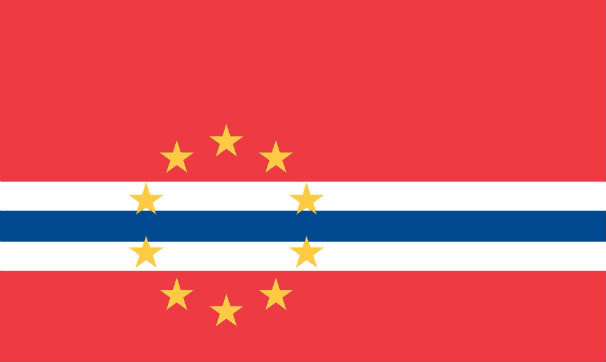
Coat of arms

Location

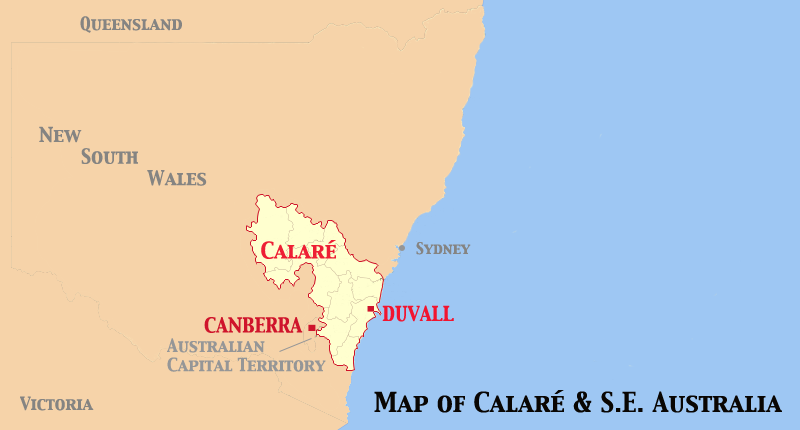
National Factfile
Nation Name(longest official form) E: The Democratic Crowned Republic of Calaré
IR: Poblacht Dhaonlathach an choróin Calaré
Nation Name (native name): Calaré
National Anthem: God defend our homeland - https://www.youtube.com/watch?v=B0SYy0dY1wA
National Motto: Orta Recens Quam Pura Nites - Newly Risen, How Brightly You Shine.
Capital: Duvall - Location 34.25.59S 150.52.59E, Population 793,296
Government: Crowned Republic (Federal Constitutional Monarchy)
Head(s) of State: King Saxon 1 (house of O' Cuinn (Quinn)
Prime Minister: Nathan Rush SDLP - Social Democratic Labour Party
Offical Language(s): English, Irish Gaelic
Population: 2,587,971
Area: 63,976 SQ/Km
Density: 40.452/SqKm
Climate: Oceanic/sub tropical on coast to cool/Temperate inland
GDP 83,850,260,400 (83.850 billion) ($ - Per Capita): 32,400
HDI: .952 (18th) 2009 data
Drives on the: Left
Internet TLD: .ce
Telephone Code: +699 (+6991 - +6996 Landlines, +6999 Mobiles(cell) phones)
History:
The History of Calaré began with the arrival of European explorers, who first sighted the country in 1770 and formally began settlement in 1828. Since then Calaré has grown from a small colonial backwater to a modern and sophisticated nation-state that is ready to take its rightful place on the world stage. Prior to this there is evidence of indigenous settlement having taken place at least 10,000 years ago, with the Aboriginal peoples having come to Australia over 40,000 years ago.
Colonial Calaré
Duvall was the first area of Calaré to be settled in 1828, when it was established as a penal settlement. More settlements were subsequently established at other locations, with settlers coming for a variety of reasons. The next to come were the squatters whose seeking of grazing lands for their sheep flocks led to the establishment of Bhuxton in 1839. In the meantime, settlers seeking the beautiful timbers of the Red Cedar tree on the coast established Lynne 1840 and Jervis Harbour in 1841. For many years, there were only a few thousand settlers in Calaré. Further settlements were opened at Monroe, Bonython and Cork by the late 1840s.
Despite their slow beginnings, these centres would boom with the discovery of gold and gemstones on the tablelands in the 1860s. Coupled with the arrival of the railways in the 1880s, the latter half of the nineteenth century saw a steady growth in the population of the region, and with it a growing sense of a distinct local identity.
Australian Calaré
After ten years of debate, conventions and referenda, Calaré was joined to the newly formed Commonwealth of Australia on the 1 January 1901. When Cook had sailed by 131 years earlier it had been a part of the colony (now state) of New South Wales. Throughout much of the Australian period, there was constant agitation for the separation of Calaré from New South Wales. A number of plans were drawn up over the years, including royal commissions and finally a referendum, which was defeated in 1967.
With a downturn in the world economy during the 1970s, Calaré began to show signs of economic decay. Despite this, some coastal centres enjoyed a boom of development and growth. Duvall and Jervis Harbour both went from being small fishing ports to major resort and tourist centres, outstripping the inland centres and taking away services from these towns. The success of others bred resentment in those towns and communities that had once enjoyed better times. In frustration, this disenfranchised bloc embraced the ideas of the Free Calaré Party, which grew to become a radical group that advocated the removal of overseas interests from Australia and the radical reform of the Australian political system.
Statehood
In 1976 the New South Wales Conservative coalition government lost the March General election to the Labour party by a wide margin. One of the campaign issues was Statehood for Calaré and surrounding areas. The Conservative government had opposed such a move, citing the need to keep the territorial integrity of New South Wales intact. The Labour Party of Jim Marsden were in favour of initiating a process where by the matter was resolved through a series of referenda in the local government areas of the central tablelands and coastal areas. The Free Calaré Party agitated for complete independence but the Labour party at both State and Federal levels favoured a more politically palatable approach of Statehood, whilst the Conservative opposition argued for no change at all. In 1979 the process began with the passing of the Calaré Statehood Referenda bill in both the NSW and Federal Australian Parliament. On the 3rd of September 1979 the Local Government areas of Wingecarribee, Shoalhaven, Kiama, Wollongong, Shellharbour, Eurobodalla, Cabonne, Blayney, Cowra, Bathurst, Oberon, Lithgow, Mudgee, Orange, Forbes, Palerang, Goulburn, Upper Lachlan, Weddin, Parkes, Young, Harden and Yass voted on the question of Statehood for Calaré with the vast majority of the electorate voting YES. This did not please everyone but all political parties agreed to honour the electorates wishes. The 23 council areas on the 14th of Feburary 1981 were proclaimed the seventh state of the Commonwealth of Australia with the State Capital being Duvall.
Civil War
After Fifteen years of Statehood the Free Calaré Party morphed into the United Calaré Militia, which took up arms in early 1996, and was quickly involved in a violent struggle for control of the region. The early years of the Civil War were an insurgency carried out in remote and rugged bushland. The tables turned in 1998 when the militia turned on the towns and began to occupy them against distracted Australian resistance.
By late 1999 the militia had gained control of almost all the towns in the Western and Central regions . Only Jervis Harbour and Duvall, as the centre for government administration in the region, remained under "Australian" control. A counter–attack, know as Operation Taipan, failed to dislodge the rebels, and after some heavy handed actions, led to any remaining support for the government to leech away. A successful ceasefire called was by the international community in early 2000, and would lead to the Treaty of Singapore, which was signed on the 22 May 2000. In the subsequent referendum held in September 2000, 19 local government areas out of the original 23 opted for independence (Harden, Lithgow, Mudgee and Yass voted against) and so formed the Democratic Crowned Republic of Calaré on 1 October 2000.
Independence
The new nation now had to find its way in the world. In the first ten years, it encouraged migration of skilled workers out of the large and overcrowded cities of Australia and invited them to build a new nation, and within the decade the national population had more then trippled. The United Calaré Party would rule for five of the first ten years, laying down much of the political culture that would shape Calaré as we know it today.
Six Day War
Relations with Australia remained strained, and a cold war of sorts lasted throughout the 2000's. Towards the end of the 2000's Australia became more belligerent under the leadership of the conservative Tony Abbott. Abbott made it clear from his election as leader that he would not tolerate Calaré's existence any further, and the election of an impatient and take no prisoners Green Party government in Calaré under Adam Allsop in March 2008 set matters on a rapid spiral to open conflict.
The subsequent Six Day War in July 2008 was an overwhelming victory for Calaré. Between 2008 and 2009, Calaré occupied a significant chuck of Australia, and the military administered these areas as occupied territories. The Calarée had severely damaged the Australian psyche and destroyed the Australian South-West Pacific Fleet. To protect itself, Calaré swiftly embraced an alliance with the Kingdom of New England and other European Nations, with a free trade and military agreement, known as the Treaty of Armidale signed in early 2010.
Demographics:
Most of the Calaréann population descends from 19th and 20th century immigrants, who came from Great Britain and Ireland. At the time of independence, the population of Calaré was approximately 1,621,370. Over the last ten years, that population has increased to 2.5 million, with the growth being the result of one the worlds most progressive immigration schemes, and a solid birth rate with families having two or three children. The rate of population growth is expected to increase rapidly after 2010 when the present Immigration Control Act expires.
Whilst the vast majority of immigrants have been Australians and New Zealanders of Anglo-Irish origin, there are now established communities of Chinese, French, Germans, Indians, Koreans and South Africans mostly in Monroe, St Kertigan and Bhuxton. These groups number less than 13% of the total population, but they have already left their mark on Calaré's society and culture.
Age structure:
0-15 years: 24%
16-64 years: 56%
65-99 years: 15%
100 years and over: 5%
Population growth rate: 7.6% (2005-2010)
Birth rate: 9.85 births/1,000 population (2010)
Death rate: 3.25 deaths/1,000 population (2010)
Net migration rate: 2.6 migrant(s)/1,000 population (2010)
Sex ratio:
At birth: 1.01 male(s)/female
Under 15 years: 1.09 male(s)/female
15-64 years: 1.01 male(s)/female
65 years and over: 0.95 male(s)/female (2010 est.)
[/right]Infant mortality rate: 0.05 deaths/1,000 live births (2010 est.)
Life expectancy at birth:
Total population: 92.24 years
Male: 90.86 years
Female: 93.63 years (2010 est.)
Total fertility rate: 2.44 children born/woman (2010 est.)
Nationality:
Noun: Calarée
Adjective: Calaréann
Ethnic groups: Caucasian 75.9%, South Asian 10%, Asian 9.8%, Indigenous 2.8%, Other 1.5%
Religions: Catholic 38.2%, Christian 20.9%, Other 10.3%, None 30.6%
Languages: English 87.9% (Official), Irish Gaelic 10.0% Other 2.1%
Literacy (Age 15 and over can read and write):
Total Population: 98.85% (2010 est.)
Male: 96.8%
Female: 98.9%
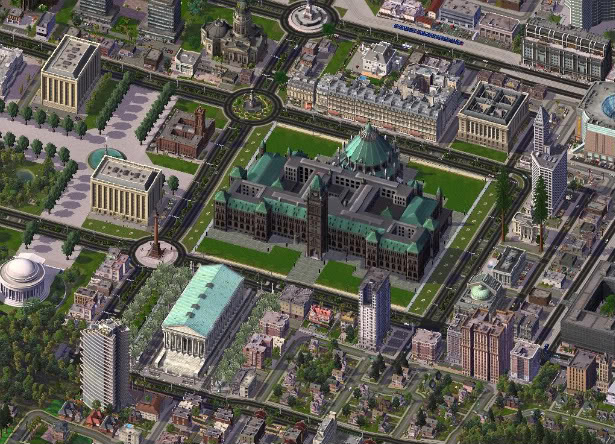
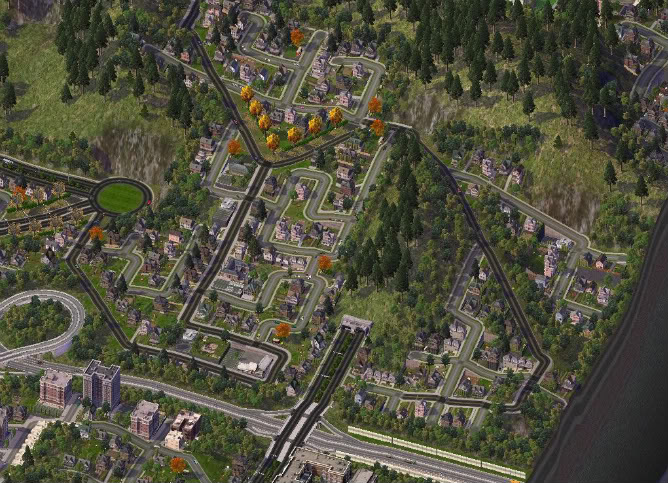
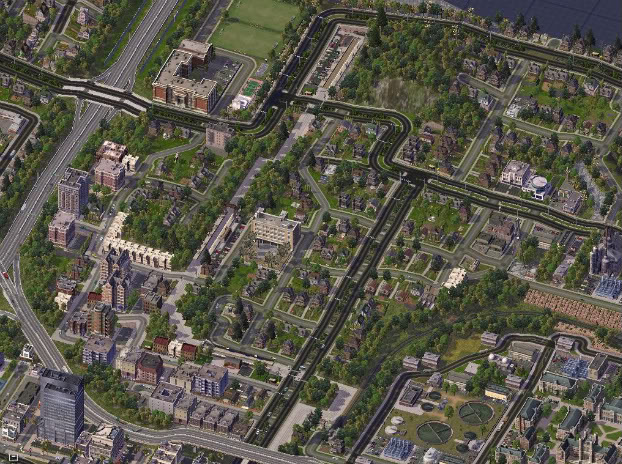



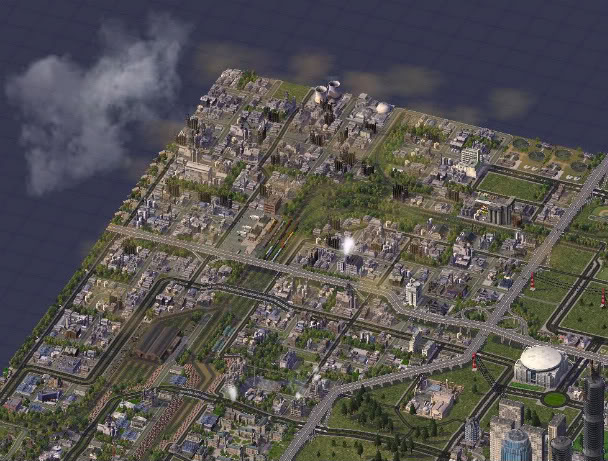
National Flag

Coat of arms

Location


National Factfile
Nation Name(longest official form) E: The Democratic Crowned Republic of Calaré
IR: Poblacht Dhaonlathach an choróin Calaré
Nation Name (native name): Calaré
National Anthem: God defend our homeland - https://www.youtube.com/watch?v=B0SYy0dY1wA
National Motto: Orta Recens Quam Pura Nites - Newly Risen, How Brightly You Shine.
Capital: Duvall - Location 34.25.59S 150.52.59E, Population 793,296
Government: Crowned Republic (Federal Constitutional Monarchy)
Head(s) of State: King Saxon 1 (house of O' Cuinn (Quinn)
Prime Minister: Nathan Rush SDLP - Social Democratic Labour Party
Offical Language(s): English, Irish Gaelic
Population: 2,587,971
Area: 63,976 SQ/Km
Density: 40.452/SqKm
Climate: Oceanic/sub tropical on coast to cool/Temperate inland
GDP 83,850,260,400 (83.850 billion) ($ - Per Capita): 32,400
HDI: .952 (18th) 2009 data
Drives on the: Left
Internet TLD: .ce
Telephone Code: +699 (+6991 - +6996 Landlines, +6999 Mobiles(cell) phones)
History:
The History of Calaré began with the arrival of European explorers, who first sighted the country in 1770 and formally began settlement in 1828. Since then Calaré has grown from a small colonial backwater to a modern and sophisticated nation-state that is ready to take its rightful place on the world stage. Prior to this there is evidence of indigenous settlement having taken place at least 10,000 years ago, with the Aboriginal peoples having come to Australia over 40,000 years ago.
Colonial Calaré
Duvall was the first area of Calaré to be settled in 1828, when it was established as a penal settlement. More settlements were subsequently established at other locations, with settlers coming for a variety of reasons. The next to come were the squatters whose seeking of grazing lands for their sheep flocks led to the establishment of Bhuxton in 1839. In the meantime, settlers seeking the beautiful timbers of the Red Cedar tree on the coast established Lynne 1840 and Jervis Harbour in 1841. For many years, there were only a few thousand settlers in Calaré. Further settlements were opened at Monroe, Bonython and Cork by the late 1840s.
Despite their slow beginnings, these centres would boom with the discovery of gold and gemstones on the tablelands in the 1860s. Coupled with the arrival of the railways in the 1880s, the latter half of the nineteenth century saw a steady growth in the population of the region, and with it a growing sense of a distinct local identity.
Australian Calaré
After ten years of debate, conventions and referenda, Calaré was joined to the newly formed Commonwealth of Australia on the 1 January 1901. When Cook had sailed by 131 years earlier it had been a part of the colony (now state) of New South Wales. Throughout much of the Australian period, there was constant agitation for the separation of Calaré from New South Wales. A number of plans were drawn up over the years, including royal commissions and finally a referendum, which was defeated in 1967.
With a downturn in the world economy during the 1970s, Calaré began to show signs of economic decay. Despite this, some coastal centres enjoyed a boom of development and growth. Duvall and Jervis Harbour both went from being small fishing ports to major resort and tourist centres, outstripping the inland centres and taking away services from these towns. The success of others bred resentment in those towns and communities that had once enjoyed better times. In frustration, this disenfranchised bloc embraced the ideas of the Free Calaré Party, which grew to become a radical group that advocated the removal of overseas interests from Australia and the radical reform of the Australian political system.
Statehood
In 1976 the New South Wales Conservative coalition government lost the March General election to the Labour party by a wide margin. One of the campaign issues was Statehood for Calaré and surrounding areas. The Conservative government had opposed such a move, citing the need to keep the territorial integrity of New South Wales intact. The Labour Party of Jim Marsden were in favour of initiating a process where by the matter was resolved through a series of referenda in the local government areas of the central tablelands and coastal areas. The Free Calaré Party agitated for complete independence but the Labour party at both State and Federal levels favoured a more politically palatable approach of Statehood, whilst the Conservative opposition argued for no change at all. In 1979 the process began with the passing of the Calaré Statehood Referenda bill in both the NSW and Federal Australian Parliament. On the 3rd of September 1979 the Local Government areas of Wingecarribee, Shoalhaven, Kiama, Wollongong, Shellharbour, Eurobodalla, Cabonne, Blayney, Cowra, Bathurst, Oberon, Lithgow, Mudgee, Orange, Forbes, Palerang, Goulburn, Upper Lachlan, Weddin, Parkes, Young, Harden and Yass voted on the question of Statehood for Calaré with the vast majority of the electorate voting YES. This did not please everyone but all political parties agreed to honour the electorates wishes. The 23 council areas on the 14th of Feburary 1981 were proclaimed the seventh state of the Commonwealth of Australia with the State Capital being Duvall.
Civil War
After Fifteen years of Statehood the Free Calaré Party morphed into the United Calaré Militia, which took up arms in early 1996, and was quickly involved in a violent struggle for control of the region. The early years of the Civil War were an insurgency carried out in remote and rugged bushland. The tables turned in 1998 when the militia turned on the towns and began to occupy them against distracted Australian resistance.
By late 1999 the militia had gained control of almost all the towns in the Western and Central regions . Only Jervis Harbour and Duvall, as the centre for government administration in the region, remained under "Australian" control. A counter–attack, know as Operation Taipan, failed to dislodge the rebels, and after some heavy handed actions, led to any remaining support for the government to leech away. A successful ceasefire called was by the international community in early 2000, and would lead to the Treaty of Singapore, which was signed on the 22 May 2000. In the subsequent referendum held in September 2000, 19 local government areas out of the original 23 opted for independence (Harden, Lithgow, Mudgee and Yass voted against) and so formed the Democratic Crowned Republic of Calaré on 1 October 2000.
Independence
The new nation now had to find its way in the world. In the first ten years, it encouraged migration of skilled workers out of the large and overcrowded cities of Australia and invited them to build a new nation, and within the decade the national population had more then trippled. The United Calaré Party would rule for five of the first ten years, laying down much of the political culture that would shape Calaré as we know it today.
Six Day War
Relations with Australia remained strained, and a cold war of sorts lasted throughout the 2000's. Towards the end of the 2000's Australia became more belligerent under the leadership of the conservative Tony Abbott. Abbott made it clear from his election as leader that he would not tolerate Calaré's existence any further, and the election of an impatient and take no prisoners Green Party government in Calaré under Adam Allsop in March 2008 set matters on a rapid spiral to open conflict.
The subsequent Six Day War in July 2008 was an overwhelming victory for Calaré. Between 2008 and 2009, Calaré occupied a significant chuck of Australia, and the military administered these areas as occupied territories. The Calarée had severely damaged the Australian psyche and destroyed the Australian South-West Pacific Fleet. To protect itself, Calaré swiftly embraced an alliance with the Kingdom of New England and other European Nations, with a free trade and military agreement, known as the Treaty of Armidale signed in early 2010.
Demographics:
Most of the Calaréann population descends from 19th and 20th century immigrants, who came from Great Britain and Ireland. At the time of independence, the population of Calaré was approximately 1,621,370. Over the last ten years, that population has increased to 2.5 million, with the growth being the result of one the worlds most progressive immigration schemes, and a solid birth rate with families having two or three children. The rate of population growth is expected to increase rapidly after 2010 when the present Immigration Control Act expires.
Whilst the vast majority of immigrants have been Australians and New Zealanders of Anglo-Irish origin, there are now established communities of Chinese, French, Germans, Indians, Koreans and South Africans mostly in Monroe, St Kertigan and Bhuxton. These groups number less than 13% of the total population, but they have already left their mark on Calaré's society and culture.
Age structure:
0-15 years: 24%
16-64 years: 56%
65-99 years: 15%
100 years and over: 5%
Population growth rate: 7.6% (2005-2010)
Birth rate: 9.85 births/1,000 population (2010)
Death rate: 3.25 deaths/1,000 population (2010)
Net migration rate: 2.6 migrant(s)/1,000 population (2010)
Sex ratio:
At birth: 1.01 male(s)/female
Under 15 years: 1.09 male(s)/female
15-64 years: 1.01 male(s)/female
65 years and over: 0.95 male(s)/female (2010 est.)
[/right]Infant mortality rate: 0.05 deaths/1,000 live births (2010 est.)
Life expectancy at birth:
Total population: 92.24 years
Male: 90.86 years
Female: 93.63 years (2010 est.)
Total fertility rate: 2.44 children born/woman (2010 est.)
Nationality:
Noun: Calarée
Adjective: Calaréann
Ethnic groups: Caucasian 75.9%, South Asian 10%, Asian 9.8%, Indigenous 2.8%, Other 1.5%
Religions: Catholic 38.2%, Christian 20.9%, Other 10.3%, None 30.6%
Languages: English 87.9% (Official), Irish Gaelic 10.0% Other 2.1%
Literacy (Age 15 and over can read and write):
Total Population: 98.85% (2010 est.)
Male: 96.8%
Female: 98.9%







 Re: Approved: Junior Membership | Democratic Crowned Republic of Calaré
Re: Approved: Junior Membership | Democratic Crowned Republic of Calaré
Nice Place you have here, but you should get some more mods for Residential, and don't make High Density on slopes(A suggetion) since it looks weird

ForthWall- Chancellor
- Posts : 2007
Age : 27
 Re: Approved: Junior Membership | Democratic Crowned Republic of Calaré
Re: Approved: Junior Membership | Democratic Crowned Republic of Calaré
* A minimum of seven in-game pictures of your nation
* A unique and realistic flag of your nation
* A map of your nation's location that does not overlap with an existing AIN nation and is realistic to your CJ style
* A type of government that again matches your CJ style
* A realistic size and population of your nation
* A reasonable ratio of custom content to maxis provided content, as that there is little repetition and a constant style of architecture
* The Network Addon Mod (NAM)
* A unique and realistic flag of your nation
* A map of your nation's location that does not overlap with an existing AIN nation and is realistic to your CJ style
* A type of government that again matches your CJ style
* A realistic size and population of your nation
* A reasonable ratio of custom content to maxis provided content, as that there is little repetition and a constant style of architecture
* The Network Addon Mod (NAM)

Kevin- Prime Minister
- Posts : 2265
Age : 28
 Re: Approved: Junior Membership | Democratic Crowned Republic of Calaré
Re: Approved: Junior Membership | Democratic Crowned Republic of Calaré
I like it!Are you portuguese?You should make new coats of arms because that coat of arms looks like the Portuguese one's.

MiguelLeal- Chancellor
- Posts : 2111
Age : 29
 Re: Approved: Junior Membership | Democratic Crowned Republic of Calaré
Re: Approved: Junior Membership | Democratic Crowned Republic of Calaré
Interesting... I was slightly sceptical since it seems unrealistic to have it actually in Australia, but you seem to have got a great history and lots of detail. A few more images with more custom content, which can be found at Simtropolis.com, sc4devotion.com and simpeg.com and this will be a superb application.

Thomas- Overlord of Eurasia
- Posts : 5849

 Re: Approved: Junior Membership | Democratic Crowned Republic of Calaré
Re: Approved: Junior Membership | Democratic Crowned Republic of Calaré
A minimum of seven in-game pictures of your nation
A unique and realistic flag of your nation
A unique and realistic coat of arms for your nation
A map of your nation's location that does not overlap with an existing AIN nation and is realistic to your CJ style
A type of government that again matches your CJ style
A realistic size and population of your nation
A reasonable ratio of custom content to maxis provided content, as that there is little repetition and a constant style of architecture
The Network Addon Mod (NAM)
A custom terrain mod
A detailed and realistic context (history) for your nation
Previous, positive and active contribution to the AIN
Attention to detail
A custom water mod
A decent amount of realism (no airports ending with a mountain or skyscrapers in the middle of a small town)
Regular updates and commitment to an external city journal (on either Simtropolis, SC4Devotion, SimPeg or Simsports, links required)
Active participation in a previous union (links required)
Have hosted a community event (must have been on a previous union or a site such as Simtropolis, SC4Devotion or Simsports, links required)
Realistic transport network appropriate to your city style and location (maps or pictures should be provided)
Custom Trees
Decent attempt at custom BATs/lots (pictures required)
A unique and realistic flag of your nation
A unique and realistic coat of arms for your nation
A map of your nation's location that does not overlap with an existing AIN nation and is realistic to your CJ style
A type of government that again matches your CJ style
A realistic size and population of your nation
A reasonable ratio of custom content to maxis provided content, as that there is little repetition and a constant style of architecture
The Network Addon Mod (NAM)
A custom terrain mod
A detailed and realistic context (history) for your nation
Previous, positive and active contribution to the AIN
Attention to detail
A custom water mod
A decent amount of realism (no airports ending with a mountain or skyscrapers in the middle of a small town)
Regular updates and commitment to an external city journal (on either Simtropolis, SC4Devotion, SimPeg or Simsports, links required)
Active participation in a previous union (links required)
Have hosted a community event (must have been on a previous union or a site such as Simtropolis, SC4Devotion or Simsports, links required)
Realistic transport network appropriate to your city style and location (maps or pictures should be provided)
Custom Trees
Decent attempt at custom BATs/lots (pictures required)

Aranho- Sovereign
- Posts : 3602

 Re: Approved: Junior Membership | Democratic Crowned Republic of Calaré
Re: Approved: Junior Membership | Democratic Crowned Republic of Calaré
Looks like it's ready for voting - it needs all greens/yellows in the first menu, and 4 greens in the second, which this application has. 


Thomas- Overlord of Eurasia
- Posts : 5849


ForthWall- Chancellor
- Posts : 2007
Age : 27
 Re: Approved: Junior Membership | Democratic Crowned Republic of Calaré
Re: Approved: Junior Membership | Democratic Crowned Republic of Calaré
It's fast because it is a great bid, and fulfills all the criteria to get to bidding already. Therefore, I vote YES.

Thomas- Overlord of Eurasia
- Posts : 5849


Saathoff- Prime Minister
- Posts : 2373

 Re: Approved: Junior Membership | Democratic Crowned Republic of Calaré
Re: Approved: Junior Membership | Democratic Crowned Republic of Calaré
voted yes but with improvement

Aranho- Sovereign
- Posts : 3602

 Re: Approved: Junior Membership | Democratic Crowned Republic of Calaré
Re: Approved: Junior Membership | Democratic Crowned Republic of Calaré
I voted yes with improvement

ForthWall- Chancellor
- Posts : 2007
Age : 27
 Re: Approved: Junior Membership | Democratic Crowned Republic of Calaré
Re: Approved: Junior Membership | Democratic Crowned Republic of Calaré
I actually believe this person has potential. However, you should grab some more custom content. It would totally make the region more attractive, but overall.
YES w/ improvement.
YES w/ improvement.
 Re: Approved: Junior Membership | Democratic Crowned Republic of Calaré
Re: Approved: Junior Membership | Democratic Crowned Republic of Calaré
I vote YES!  Great job there, 4th nation close to Australia!
Great job there, 4th nation close to Australia!  If I don't count those near Papoua New Guinea...
If I don't count those near Papoua New Guinea... 
 Great job there, 4th nation close to Australia!
Great job there, 4th nation close to Australia!  If I don't count those near Papoua New Guinea...
If I don't count those near Papoua New Guinea... 

Blakeway4- International Bigwig
- Posts : 5111
Age : 29
 Re: Approved: Junior Membership | Democratic Crowned Republic of Calaré
Re: Approved: Junior Membership | Democratic Crowned Republic of Calaré
First off, welcome to AIN and thank you for your interest in applying! You've got a very nice country, with minor realism issues, but other than that, its great! I say yes, with improvement 

Peter- Honoured Member

- Posts : 2223
Age : 30
 Re: Approved: Junior Membership | Democratic Crowned Republic of Calaré
Re: Approved: Junior Membership | Democratic Crowned Republic of Calaré
I vote Yes for the record - a good application - great to see another corwned republic as well 

 Re: Approved: Junior Membership | Democratic Crowned Republic of Calaré
Re: Approved: Junior Membership | Democratic Crowned Republic of Calaré
Hey change the coat of arms please, I am portuguese and I am not happy to see a copy of my real country coat of arms!I think that you can do a good coat of arms!

MiguelLeal- Chancellor
- Posts : 2111
Age : 29
 Re: Approved: Junior Membership | Democratic Crowned Republic of Calaré
Re: Approved: Junior Membership | Democratic Crowned Republic of Calaré
Well it has been changed with both the colours and emblems. I personally like it and think it is fairly original.
Here is the official Portuguese COA for members unaware of it:

[Source: Wikipedia (En)]
Here is the official Portuguese COA for members unaware of it:

[Source: Wikipedia (En)]
 Re: Approved: Junior Membership | Democratic Crowned Republic of Calaré
Re: Approved: Junior Membership | Democratic Crowned Republic of Calaré
I think the modified COA, although not totally original, is still a good fit for the nation. Take a look at the emblems inside the shield - they're relevant to the history, geographical location and demographics of Calaré (i.e. the Southern Cross, Irish harp, etc.).
I'm voting YES.
I'm voting YES.

woodb3kmaster- Permanent Secretary
- Posts : 583
Age : 38
 Re: Approved: Junior Membership | Democratic Crowned Republic of Calaré
Re: Approved: Junior Membership | Democratic Crowned Republic of Calaré
Yes, looks great to me.

Cyclone-1001- Councillor
- Posts : 237
Age : 29
 Re: Approved: Junior Membership | Democratic Crowned Republic of Calaré
Re: Approved: Junior Membership | Democratic Crowned Republic of Calaré
* A minimum of seven in-game pictures of your nation
*""" A unique and realistic flag of your nation"""
:GG:
* A map of your nation's location that does not overlap with an existing AIN nation and is realistic to your CJ style
* A type of government that again matches your CJ style
* A realistic size and population of your nation
* A reasonable ratio of custom content to maxis provided content, as that there is little repetition and a constant style of architecture
* The Network Addon Mod (NAM)
His flag is a recolor...or a color inversion...
Original: (Cape Verde - Old portuguese colony, now an independent country not so far from the Atlantic Federation, near Africa's western coast)

His flag:

At first look I though that he was using the portuguese coat of arms, but then a few minutes later I saw the difference. But I gotta say that he should try something more original, he has such a nice country, original national symbols makes everyone's nation even nicer and adds a lot more of realism to the thing...
About the rest I see no major problems...
*""" A unique and realistic flag of your nation"""
:GG:
* A map of your nation's location that does not overlap with an existing AIN nation and is realistic to your CJ style
* A type of government that again matches your CJ style
* A realistic size and population of your nation
* A reasonable ratio of custom content to maxis provided content, as that there is little repetition and a constant style of architecture
* The Network Addon Mod (NAM)
His flag is a recolor...or a color inversion...
Original: (Cape Verde - Old portuguese colony, now an independent country not so far from the Atlantic Federation, near Africa's western coast)

His flag:

At first look I though that he was using the portuguese coat of arms, but then a few minutes later I saw the difference. But I gotta say that he should try something more original, he has such a nice country, original national symbols makes everyone's nation even nicer and adds a lot more of realism to the thing...
About the rest I see no major problems...


Spy9600- Counsel
- Posts : 812
Age : 30
Page 1 of 2 • 1, 2 
 Similar topics
Similar topics» Approved: Junior Membership | Fairview Democratic Republic
» Approved: Full Membership | Fairview Democratic Republic
» Approved: Full Membership | Sovereign Crowned Republic of Holidia
» Approved: Junior Membership | Republic of Starfishland
» Approved: Member State | Crowned Republic of Calaré
» Approved: Full Membership | Fairview Democratic Republic
» Approved: Full Membership | Sovereign Crowned Republic of Holidia
» Approved: Junior Membership | Republic of Starfishland
» Approved: Member State | Crowned Republic of Calaré
Page 1 of 2
Permissions in this forum:
You cannot reply to topics in this forum